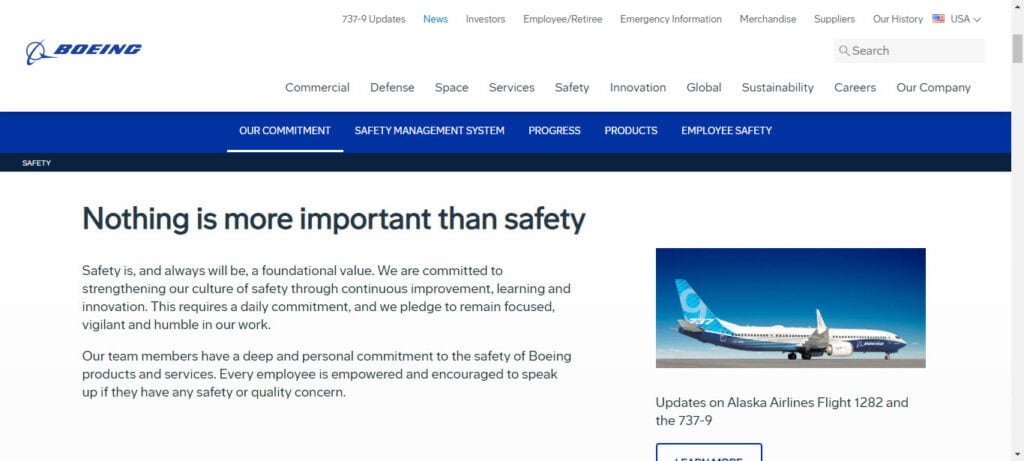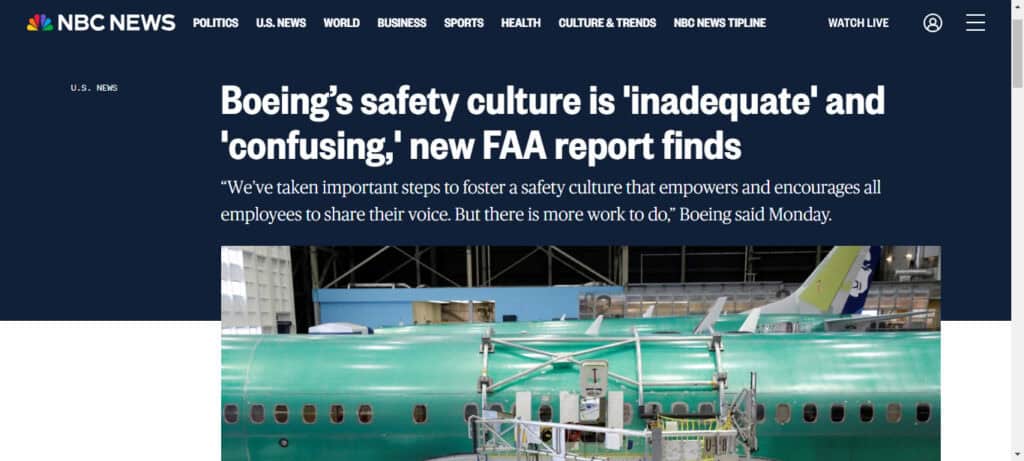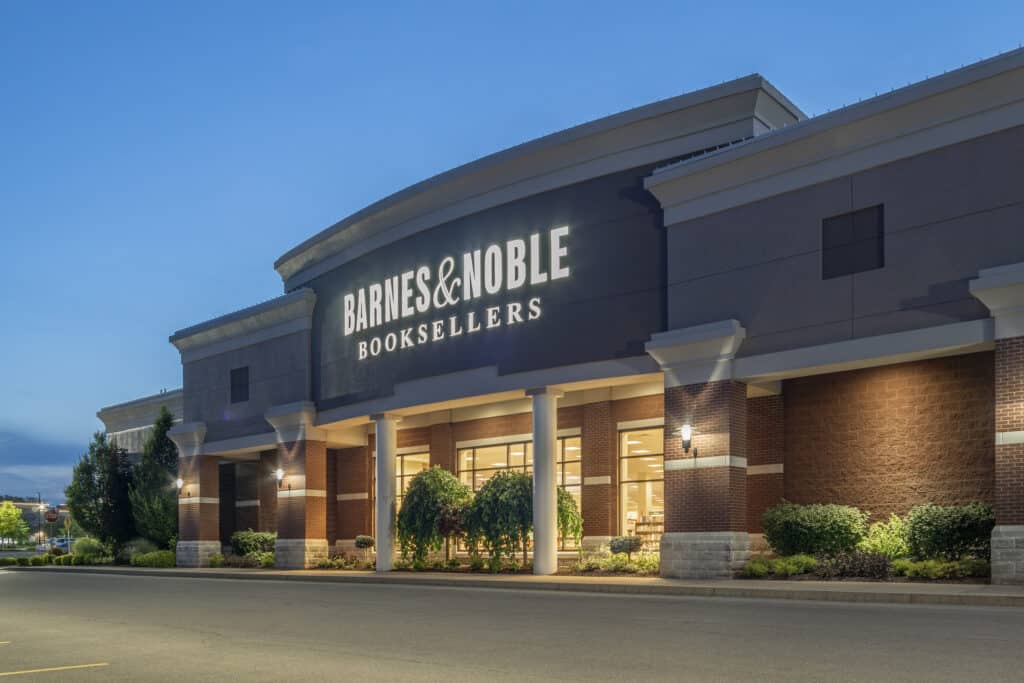I never paid attention to the type of plane I was flying in until March 12, 2019.
That was 2 days after Ethiopian Airlines 302 crashed, killing all 157 people on board. It was the second Boeing 737 MAX crash in 5 months.
Forty-eight hours after the crash Boeing had said nothing about it. The US had not yet grounded 737 MAX planes. I was scheduled to fly 2 weeks later from Boston to Portland, Oregon for the Association of Writers and Writing Programs conference.
All I could think was I am not getting on a 737 MAX. I checked the planes for my flights. And I have ever since.
Like many, I hoped Boeing would take the tragedies and subsequent investigation as a cue to overhaul their processes and brand culture.
Instead, the company has become a lesson on how to jeopardize your brand’s future.
How Boeing’s Brand Has Crashed
Boeing has long claimed safety as their most important value. They say they are committed to a culture of safety, and that “Every employee is empowered and encouraged to speak up if they have any safety or quality concern.”

But investigations into the 737 MAX crashes found that Boeing managers pressured the FAA to expedite the model’s safety certification and to delegate safety assessments to Boeing employees.
Mike Renzelmann, an engineer who worked on the MAX’s flight controls was quoted in The New York Times as saying, “They [Boeing] wanted to A, save money and B, to minimize the certification and flight-test costs.” Words in the article used to describe the 737 MAX design and systems included “patchwork,” “makeshift,” and “workarounds.”
In April 2019 a New York Times investigation found that Boeing pushed employees at their North Charleston, South Carolina facility to turn out 787 Dreamliners quickly, ignoring the safety issues they raised and pressuring them not to report violations.
At the time I wrote that Boeing’s stated values and behaviors were contradictory, creating confusion and lacking clarity on priorities.
Both I and Harvard Business School professor Amy C. Edmondson expected Boeing to do a full operations review, to make significant changes to fix the safety issues, and to heed their employees’ concern without retribution.
You would think 346 casualties and 2 years of grounding the 737 MAX would be wake-up call Boeing needed.
Yet on January 5, 2024 a door flew off a 737 MAX 9 on an Alaskan Airlines flight.
That prompted an FAA investigation where they found Boeing’s safety culture to be “inadequate” and “confusing.”
Nothing had changed.

Fifty current and former Boeing employees now seek to blow the whistle on manufacturing process issues to help the company reinstate safety standards.
Boeing’s claims to safety as a foundational value and a culture of safety don’t hold up.
Both passengers and customers are fleeing.
The Boston Globe reported that Ciera Wilson paid $150 more and went to the airport at 3:30am with her 3-year-old to avoid flying on a Boeing plane to her grandfather’s funeral.
A travel agent told of customers spending $250 more to avoid Boeing planes, while other customers canceled flights and drove the 1,300 miles from Boston to Orlando.
Passengers are taking extreme measures to dodge the brand!
The widespread sentiment has led to the cultural catchphrase “If it’s Boeing, I’m not going.”
Meanwhile, airlines – Boeing’s direct customers – have canceled and decreased orders. Boeing’s new orders are low, totaling just 4 in May 2024. For the second month in a row, no one ordered a 737 MAX.
Passengers and customers no longer trust Boeing. It will be hard to win them back, if not impossible.
Before Boeing can begin to win back their trust, the company needs to earn it among their employees.
Boeing’s outward emphasis on safety and claim to employee empowerment contrast with the cost-saving, time-expediting measures and retaliation for raising concerns that employees saw and endured.
For employees to deliver the customer experience a brand wants to reflect – in Boeing’s case, safety – they must have that experience themselves.
How Barnes & Noble’s Brand Has Resurged
Regaining customers’ trust involves a frank look at company culture and major changes. Barnes & Noble provides an excellent example.
After peaking at 726 stores in 2008, Barnes & Noble began closing stores in 2010 and were down to 600 when the pandemic struck.
The book-buying world wondered if Barnes & Noble would follow Borders Bookstore into bankruptcy, another Amazon casualty.
In 2019 Elliot Advisors, a hedge fund, bought Barnes & Noble and installed James Daunt as CEO. Daunt was a bookstore owner himself and had turned around British bookstore chain Waterstones several years earlier.

New Hartford, New York – Aug 18, 2019: Barnes and Noble Booksellers, with over 700 Stores Nationwide, Barnes and Noble Inc. is the Largest Book Retailer in the United States.
Daunt audited Barnes & Noble’s stores and pronounced them “crucifyingly boring.”
He said this publicly at the FutureBook Live conference in London on November 25, 2019.
Then he announced Barnes & Noble was going to “rip out the boring” and elevate the authority of their local booksellers.
When asked about his approach he replied, “How do you create an environment that’s intellectually satisfying—and not in a snobbish way, but in the sense of feeding your mind?”
While stores were closed for the pandemic, they were redesigned and refreshed. Daunt asked employees to scrutinize each book in their store and decide if it belonged there.
He decentralized book buying and empowered local store managers to craft their offer mix. He encouraged managers to curate selections based on their interests.
And he stopped taking millions of dollars of publishers’ promotional money that obligated them to push publishers’ favored books instead of what interested customers.
Sales in 2021 exceeded pre-pandemic levels and have continued to grow. Barnes & Noble opened 16 new stores in 2022, 30 in 2023, and plan to open 47 this year.
James Daunt recentered Barnes & Noble’s culture around having a good book store, told the world he was doing so, and backed his words with actions.
Recognizing employees as the frontline to the customer experience and as avid readers themselves, Daunt gave employees autonomy to decide their store’s book selection.
With the entire Barnes & Noble team focused on the reader’s experience, employees could deliver that experience to customers because they felt it themselves.
3 Keys to Your Brand’s Future
In the contrast between Boeing and Barnes & Noble, you can find 3 keys needed to ensure your brand’s future success.
1. Consistency
Your brand is the sum of all experiences and impressions your audience encounters. Consistency is crucial. It’s the only way you can build customers’ trust and keep it.
Boeing’s claim to safety and other stated values including “start with engineering excellence,” “lead on safety, quality, integrity and sustainability,” and “foster a just culture grounded in humility, inclusion and transparency” ring hollow.
They conflict with what employees and the public see from the company. They are losing their customers and passengers’ trust.
Barnes & Noble’s clear reader focus and employee empowerment show in their redesigned stores, revamped offerings, and improved customer experience. They are re-establishing and deepening customers’ trust.
Remember the adage that before customers buy, they need to “know, like, and trust” your brand? It’s true.
Deepening trust is the ultimate competitive advantage and the only way to build brand loyalty and spur repeat business.
Consistency requires you to spell out your brand’s purpose, values, and attributes and empower employees to deliver them. These become the pillars of your brand. They communicate to employees how you want them to act as they represent your brand.
Brands that hope to grow beyond a dozen people cannot rely on the business founder and top management to guide their every move. Nor would you want them to.
If you have not yet codified your brand’s purpose, values, and attributes, begin here.
2. Transparency
Gone are the days of the “employer brand,” which employers thought they crafted to attract candidates and influence employees, and which they believed separate from their “outward facing brand.”
The separate “employer brand” never really existed. The illusion held because unless you spoke to an employee, you didn’t know what the company culture was like.
Social media and review sites shattered that illusion. It’s easy for employees to share what they experience in your company and for anyone to see what they post. As Zappos founder Tony Hseih said, “Your culture is your brand.”
What does that mean?
The culture your employees experience is the brand experience they will deliver to your customers.
Boeing’s management pressured employees to behave in a manner counter to good safety practices. While Boeing’s employees prize safety, the Boeing culture hampered their efforts to deliver it.
Once James Daunt had infused Barnes & Noble’s culture with reader-focused imperatives, employees experienced that focus and were able to deliver that experience to customers.
Transparency supports consistency.
When a brand is transparent about its culture, you can see if everyone is getting the same messages and if management supports and abides their professed purpose and values.
If those conditions exist, employees can align and work in unison, enabling a consistent brand experience.
If not, customers’ experiences will vary depending on which employees they encounter and how those employees interpret their situation. The brand image will become murky. Operations may falter, as in Boeing’s case.
James Daunt’s openness about Barnes & Noble’s revised direction made it easy for employees to know and implement, and for customers to believe.
Ensure you not only codify your purpose, values, and attributes, but that you adhere to them, publicly and in-house.
3. Employee-first focus.
By now I hope you can see the crucial role your employees play in your brand. They deliver your brand experience. They have a direct role in building the reputation you seek for your brand.
For your customers to receive the brand experience you prize, your employees must have that experience and be empowered to deliver it.
Which means focusing on them first.
To Boeing, employees were cogs in a wheel they hoped to speed up.
Boeing’s pressure on employees not to report violations and retaliation for doing so undermine their statements about employee empowerment. Employees felt constrained and threatened.
To Daunt’s revamped Barnes & Noble, employees are the curators and deliverers of the reader experience.
Daunt knows the brand’s livelihood rests in the environment they create, the selection they offer, and the interaction they have with customers.
That’s why his first order of business after his assessment was to engage and empower them, and give them autonomy.
Your brand’s success depends on your employees. Ensure they have a great experience via clarity, consistency, transparency, and empowerment. Give them the autonomy they need to deliver the customer experience you want for your brand.
Be like Barnes & Noble, not Boeing and your brand’s future will be bright.
***
Just for Fun
Alaska Airlines took the fall for Boeing in this SNL skit. (2 minutes, 20 seconds)
If you have more time, check out this episode of Last Week Tonight Jon Oliver. With hilarity, Jon explains how Boeing’s culture issues go much further back and are due to a merger. Find out why many Boeing employees who manufacture the 787 Dreamliner would not fly on it …and why I still won’t fly on a 737 MAX. (32 minutes, 35 seconds)
Enjoy!

